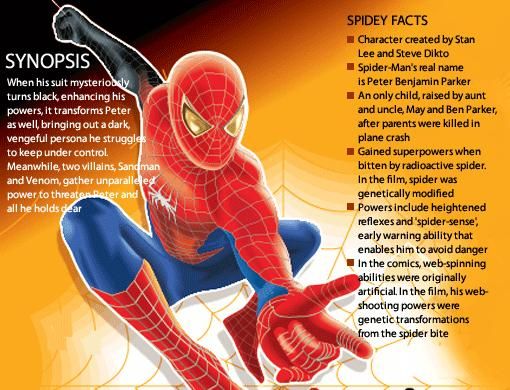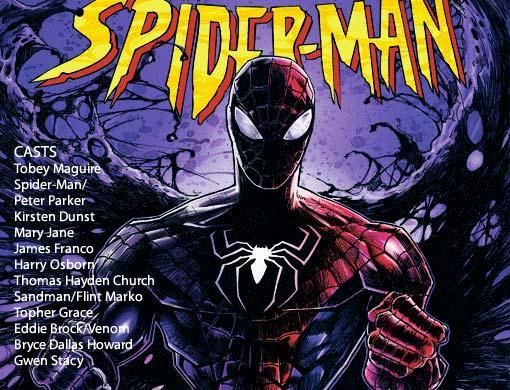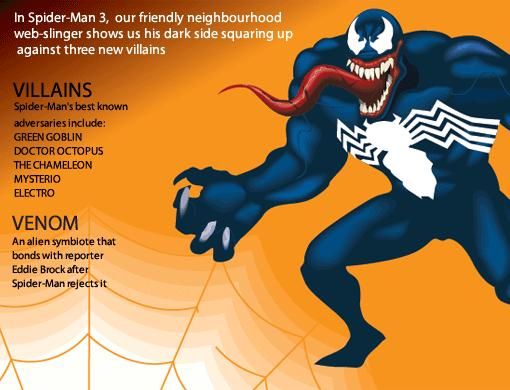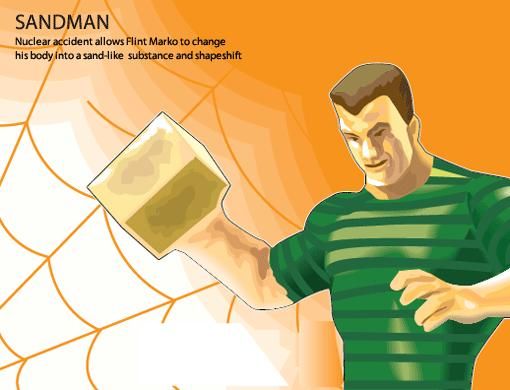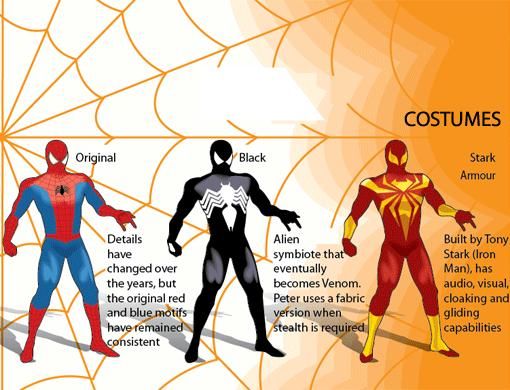Would anyone want to read about spiders? In 1962, Marvel publisher Martin Goodman didn't think so.
Luckily, others did and created a lifeline for the character that was to become Marvel's most successful superhero. What started as a one-off experiment for writer Stan Lee and artist Steve Ditko proved an unlikely hit when relegated to appear in the Amazing Fantasy comics, which had been scheduled to be axed due to poor sales.
As Lee recalled: "Nobody cares what you put in a book that's going to die so I threw in Spider-Man. I featured him on the cover and then forgot about him."
But when the sales figures came in, everyone was surprised to see issue No 15, published in August 1962, was one of the best-selling comics Marvel had ever had.
By March 1963, Marvel launched The Amazing Spider-Man which realised its potential to become the publisher's top selling series.
Human side
But what was it the fans had warmed to? It seems the fact that this superhero was flawed and fallible appealed to readers. As Peter Parker, Spider-Man was an unpopular adolescent at school whose skinny, bespectacled look was a far cry from the usual superhero physique of the time.
Teenage readers could relate to him and empathise with his struggle to come to terms with his new role as a costumed saviour. His inner battles together with his human vulnerability and everyday woes brought an appealing element of realism to the fantasy realm.
Through Spider-Man, Marvel had found a medium with which it could push the boundaries taking its audience further than ever before.
Anti-drugs
In issues No 96 to 98, which appeared from May to July 1971, the creators of Spider-Man defied the Comics Code Authority by depicting illegal drugs in a storyline to highlight the dangers. The anti-drugs message was featured at the request of the US Department of Health, Education and Welfare but went against the rules of the time which were not to focus on illegal drugs in any light.
In the story, Peter Parker's friend Harry Osborn starts taking pills and becomes very sick, so much so that when Spider-Man fights the Green Goblin (Harry's father Norman Osborn), all he has to do to defeat him is show him his ailing son.
Although the issues were printed without featuring the Comics Code logo, they proved so popular that the authority was forced to revise its regulations on the topic.
Milestone
Two years later, the death of Peter Parker's first love, Gwen Stacy, in issue No 121 (June 1973) marked another milestone in the history of comics. It tells the story of the blonde college student being held captive by the Green Goblin who then throws her off the Brooklyn Bridge. As she falls to her death, Spider-Man intervenes, catching her leg with a string of web. He believes he has saved her but is devastated when he realises she is dead.
This storyline proved highly controversial, not just because a superhero had failed so dramatically but because a major character had been killed horrifically and without warning. As such, it has divided fans, been dubbed the end of the "Silver Age of Comic Books" and even prompted scientific study to see if it was the sudden stop in Gwen's fall that actually killed her. (Evidence suggests it was, meaning it was Spider-Man who caused her death.)
While there have been countless storylines, nemeses and spin-off comics, nothing has been more confusing than the clone sagas which first began in the 1970s. You could write a thesis on the ins and outs and ramifications of the duplicate characters created, which include Spider-Man himself, his parents and Gwen among others.
Yet even the challenge of understanding the intricate web of the clone plotlines could not put off the most ardent fan. Today, the monthly Amazing Spider-Man comic is up to No 541 and still going strong. As the Spider-Man films scratch the surface of the wealth of material to choose from, new fans caught up in the superhero fantasy are turning to the original comics to feed their insatiable appetite for more.
Lucky for them, there are 45 years of fodder to choose from and plenty more on its way.
The spin-offs
As well as the Amazing Spider-Man series, the superhero has inspired the following over the years:
Spectacular Spiderman.
Spider-Man
Sensational Spider-Man.
Friendly Neighborhood Spider-Man.
Ultimate Spider-Man.
Marvel Adventures Spider-Man.
Spider-Man Loves Mary Jane.
Amazing Spider-Girl.


